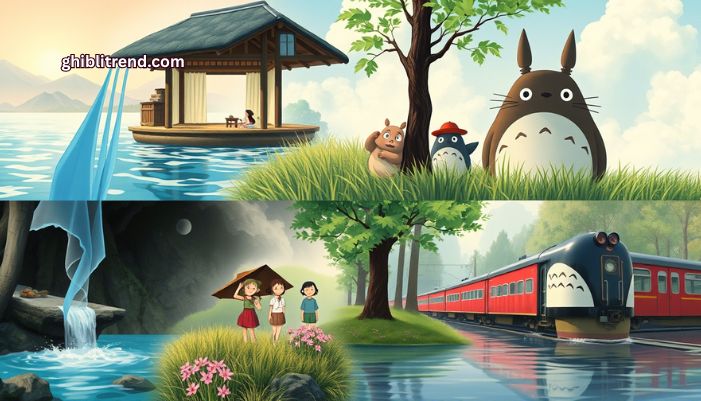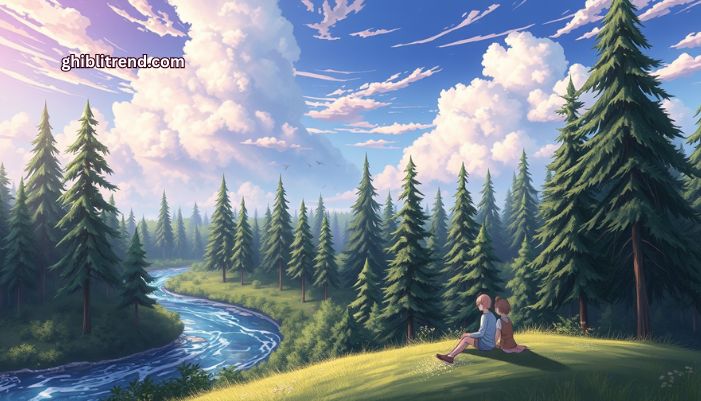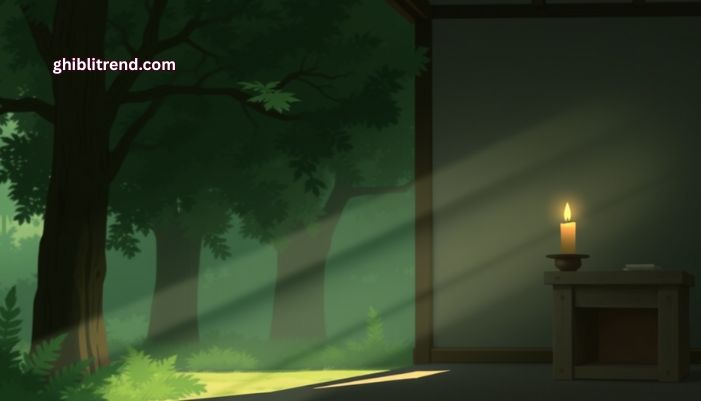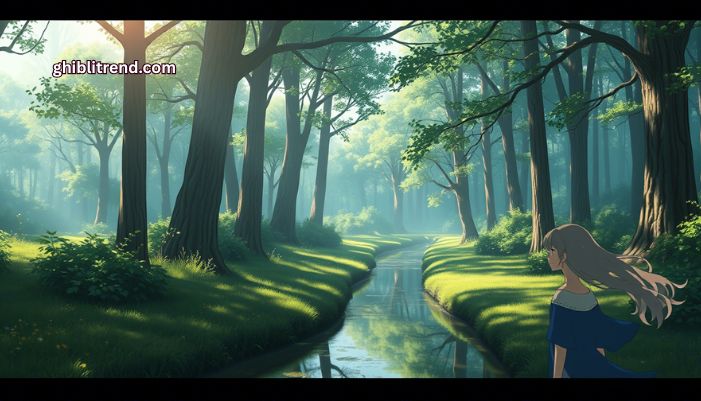Studio Ghibli Artwork: Nature, Beauty & Emotion in 2025
Have you ever watched a Studio Ghibli movie and felt like you were dreaming? The pictures are soft, warm, and full of heart. Whether it’s a flying castle or a green forest, Studio Ghibli artwork pulls you in and makes you feel something.
In this article, we’ll talk about what makes Ghibli’s art so special. We’ll look at how they draw, what feelings the pictures give us, and why fans all over the world love their style. Whether you’re a big fan or just curious, you’ll learn something new today.
What Makes Studio Ghibli’s Style So Special?
Hand-Drawn with Love
Most of Studio Ghibli’s films are hand-drawn. That means artists draw every frame by hand, just like in the old days. This makes each scene feel real and personal. You can tell someone took their time and cared about every detail.
Unlike modern movies that use a lot of computer animation, Ghibli keeps things soft and simple. The lines are gentle, the colors are warm, and everything looks like a storybook come to life.
Characters That Feel Real
Ghibli characters aren’t loud or flashy. They don’t have huge eyes or wild faces. But they show so much emotion through small actions—like a quiet smile or a deep breath.
This makes them feel more human. Even if they’re riding on a broom or talking to a spirit, we believe in them because they act in ways we understand.
Famous Ghibli Films and Their Art

Spirited Away: A World Full of Wonder
In Spirited Away, every place feels alive. The bathhouse, the ghost town, and even the train ride across the water look like scenes from a dream. The colors are soft, the buildings are full of tiny details, and every corner tells a story.
This movie shows how much Ghibli cares about the world in the background. Even if a character isn’t talking, the world keeps moving and breathing.
My Neighbor Totoro: Nature and Peace
My Neighbor Totoro is full of simple beauty. The trees, the fields, the small village—they all feel real. The colors are green and warm, and the whole world feels safe and calm.
Totoro, the big forest spirit, lives in a world that makes you feel happy just looking at it. There’s no big action or fighting. It’s just about children, nature, and quiet moments. That’s what makes it magical.
Nature Is the Heart of Studio Ghibli Artwork

Forests, Rivers, and Skies
Nature is everywhere in Ghibli films. Trees sway, water sparkles, and clouds float across the sky. You can feel the wind just by watching.
Miyazaki, the main creator of Ghibli, loves nature. You can tell by the way he draws it—with care and respect. In his stories, nature is not just a setting. It’s part of the story. Sometimes, it’s even the main character.
The Sky That Tells a Story
Ghibli skies are famous. They’re big, full of light, and always changing. In many scenes, characters fly through the air or sit and watch the clouds. The sky shows freedom, hope, and peace.
Even without words, you know what the characters are feeling just by looking at the sky above them.
How Ghibli Uses Color and Light

Colors That Feel Real
Studio Ghibli doesn’t use super bright colors. Instead, they pick soft, natural ones. Greens, blues, browns, and soft reds. These colors feel warm and calm. They help you feel safe inside the world of the movie.
You won’t see neon lights or wild colors. Everything is made to feel like real life—but a little more magical.
Light That Sets the Mood
Light is also important. In Ghibli movies, you’ll notice how the sun shines through trees, how the moon lights up the night, or how a candle glows in a dark room.
This light makes scenes feel real and helps tell the story. Bright scenes feel happy. Darker scenes feel calm or sad. Ghibli uses light to show feeling, not just to light the way.
Read: Studio Ghibli Cats: Names, Stories & Hidden Magic in 2025
The People Behind the Artwork
Hayao Miyazaki: The Dream Maker
Hayao Miyazaki is one of the founders of Studio Ghibli. He’s made many of the most loved Ghibli movies. He’s also an artist himself. He often draws the whole story as pictures before writing it down.
He believes that a movie should be built through images first. That’s why Ghibli films feel so visual—like a story you can walk into.
Kazuo Oga: The Master of Backgrounds
Kazuo Oga is another key artist at Ghibli. He paints the backgrounds—the forests, houses, hills, and skies. His style is soft and detailed. He makes the world feel like it has a soul.
He once said he doesn’t just draw what he sees—he draws how it feels. That’s why his art touches so many people.
How Ghibli Art Inspires the World

A Big Influence on Artists Everywhere
Lots of artists, from animators to game designers, say that Ghibli changed the way they see art. You can see Ghibli-style trees, skies, and faces in many shows, games, and books.
The quiet beauty and strong emotion in Ghibli’s artwork have started a new way of telling stories—slow, gentle, and deep.
Loved by People All Over the World
Even though Ghibli films are made in Japan, people everywhere love them. They don’t need to understand every word. The art says it all.
Totoro, No-Face, and the walking castle are known across the globe. These pictures stick in our minds because they show simple truths—love, fear, joy, and wonder.
Why Studio Ghibli Artwork Stays in Our Hearts
Small Moments Matter Most
In many Ghibli movies, the best scenes are the quiet ones. A girl eating rice. A cat watching the rain. A kid waiting at the bus stop. These small things feel big in Ghibli’s world.
The art slows us down. It tells us it’s okay to pause. It’s okay to just be.
The Art That Tells the Story
Sometimes, you don’t need words. In Ghibli movies, the pictures speak loud enough. A sunset can show the end of a chapter. A flower blooming can show hope. A dark tunnel can show fear.
Everything is part of the story—from the biggest sky to the tiniest bug.
Conclusion
Studio Ghibli artwork is more than just drawing. It’s emotion, care, and heart. It shows that even in a world full of fast screens and loud sounds, slow, gentle pictures can still make us stop and feel.
These films remind us to love nature, to take care of each other, and to find beauty in everyday life. That’s why their artwork is timeless. It stays with us—long after the screen goes dark.